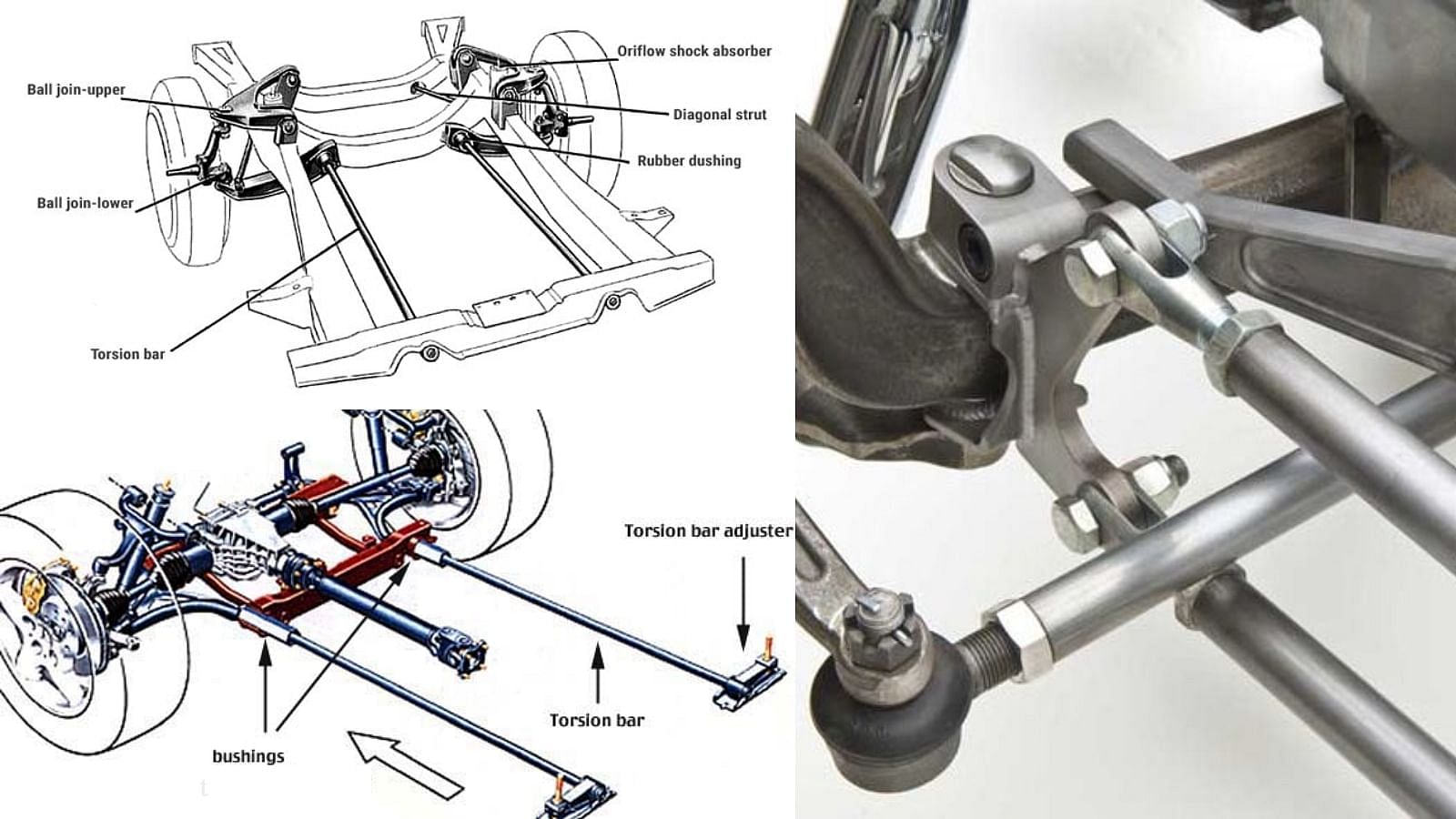Know What A Torsion Bar Is And Here’s How They Work
We are well aware that cars use a lot of components to ensure efficient and smooth operation. One such component that is responsible to keep the drive comfortable is the suspensions and torsion bars contribute a lot in that regard. A torsion bar is a mechanical component often used in vehicle suspension systems. It's a long, cylindrical bar designed to absorb and distribute forces when twisted. By providing resistance against twisting, it helps control a vehicle's movement and maintain stability, contributing to a smoother and more controlled ride.
Published July 31, 2024

In the world of automotive engineering, torsion beam suspension has carved its niche as a fascinating and practical suspension system. Recognized for its simplicity and cost-effectiveness, this suspension setup has earned its place in various vehicle models. Characterized by a solid rear axle with a twisting, interconnected beam, the torsion beam suspension delivers a comfortable ride and enhanced stability. Its design provides an optimal compromise between ride comfort and handling, making it a popular choice for compact cars and smaller vehicles. While not as flashy as other suspension types, the torsion beam's reliable performance has garnered a dedicated following.
Newest developments in torsion bar suspension technology
Over the years, this suspension system has undergone substantial improvements, resulting in enhanced ride comfort, handling, and overall performance. The latest developments showcase innovative engineering, utilizing advanced materials and design techniques to optimize weight distribution and reduce unsprung mass. This modernized torsion beam now offers superior stability and responsiveness, providing a seamless driving experience. As a result of these advancements, automakers have been able to strike a fine balance between cost-effectiveness and improved ride quality, making torsion beam suspension a favored choice
Why use torsion bar suspension?

One key advantage lies in its ability to deliver a comfortable and stable ride, absorbing road imperfections with ease. The reduced number of moving parts contributes to improved reliability and lower maintenance costs, appealing to budget-conscious drivers. Torsion beam suspension also enhances overall handling characteristics, promoting predictable and responsive cornering. The suspension's torsional rigidity aids in maintaining stability during high-speed maneuvers, granting drivers a sense of confidence on the road.
While high-performance sports cars may favor more complex suspension systems, the torsion beam's practicality, affordability, and reliable performance make it an attractive choice for everyday commuting and city driving.
Popular cars with torsion bar suspension?

From the practicality of everyday commuters to the zesty performance-oriented models, the adoption of torsion beam suspension has been embraced by various cars, garnering widespread popularity over the years. This suspension system, known for its cost-effectiveness and compact design, has found favor in both compact and midsize vehicles. Among the models that popularized torsion beam suspension, the Volkswagen Golf stands as an exemplary pioneer, showcasing its efficiency and ride comfort. The Ford Focus, with its nimble handling and accessible price point, has also contributed significantly to the spread of this suspension technology. Additionally, the Hyundai Elantra, the Honda Civic, and the Toyota Corolla well-loved for their reliable performance and smooth ride, have played a pivotal role in promoting the adoption of torsion beam suspension in the automotive industry. Thanks to these models and their pragmatic advantages, torsion beam suspension has become a prevalent choice for manufacturers and drivers alike.

The world of automotive suspension design finds itself at a crossroads, with the torsion beam suspension system occupying a significant position. Despite its practicality and cost-effectiveness, some critics argue that torsion beam suspension lacks the sophistication and handling prowess of more advanced systems. However, it's essential to recognize that this suspension design serves its purpose well in many mainstream vehicles, providing a comfortable ride for everyday drivers with low maintenance. As automotive technology advances, we may witness a gradual shift towards more advanced suspension systems like multi-link setups or adaptive damping. These alternatives offer superior handling and ride characteristics, making them appealing to performance-oriented and luxury vehicle segments. Nonetheless, it is likely that torsion beam suspension will continue to thrive in budget-friendly and compact car models due to its simplicity and cost efficiency.
Write a comment
Comments
No Comments Yet









